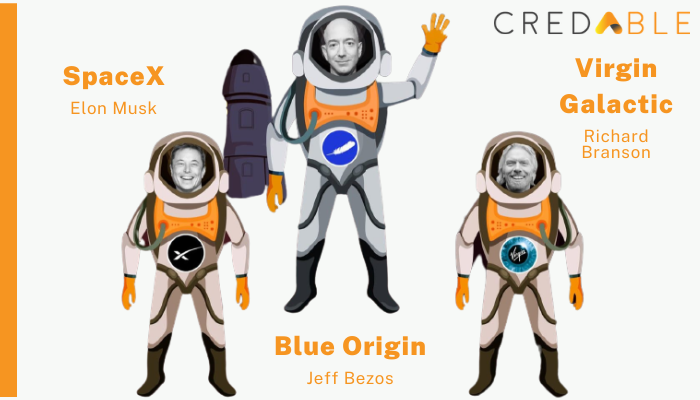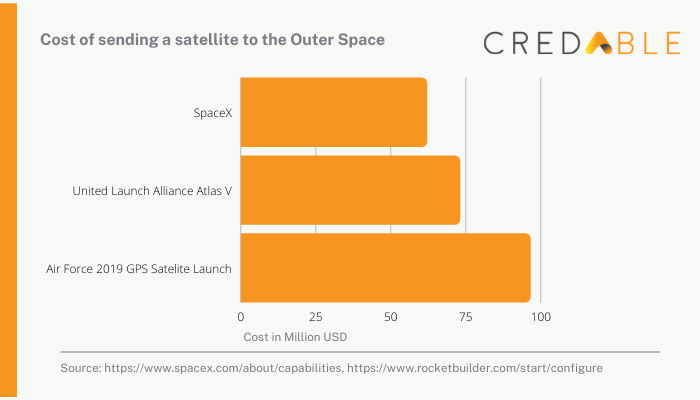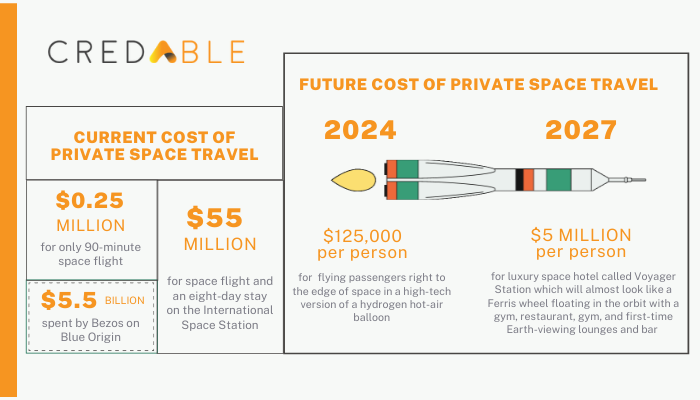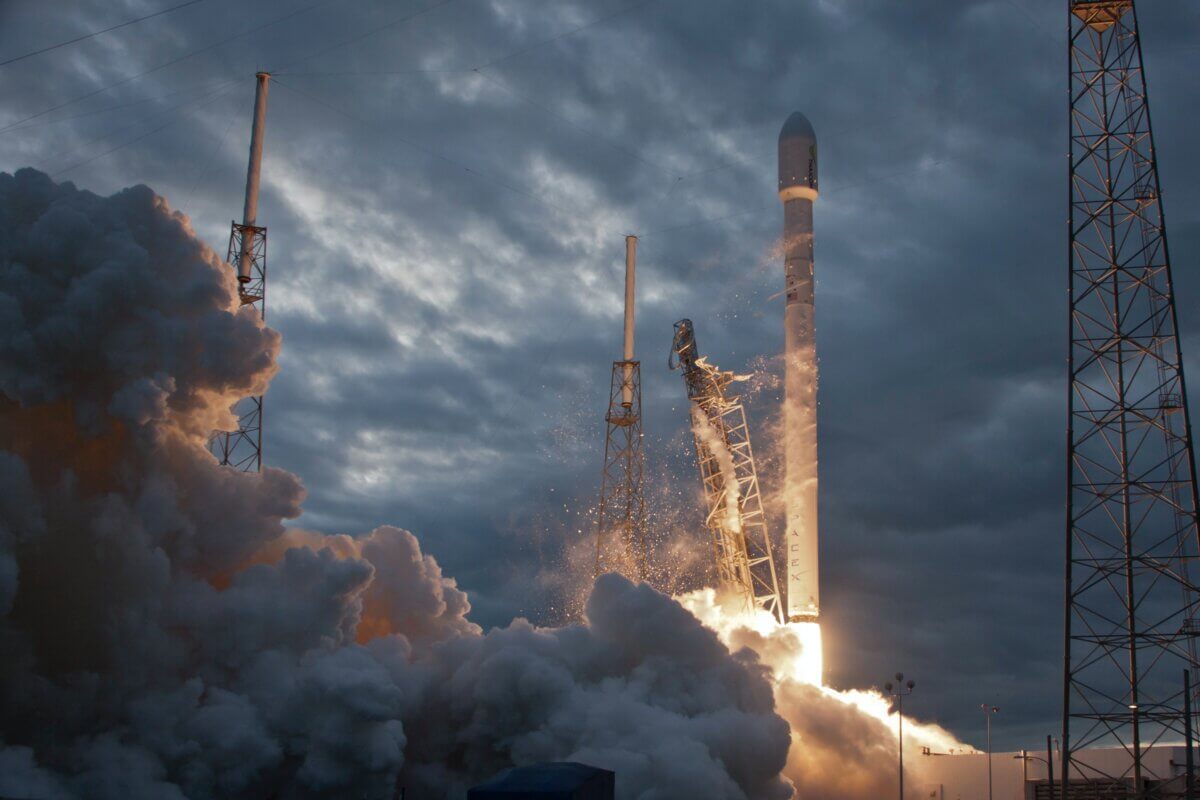The Economics of Going To Space – Billionaire Edition
The story so far: Two billionaires created history by jaunting off to suborbital space in their privately funded spaceflights.
While it’s not the same feat as landing on the moon 52 years ago, it’s still an incredible accomplishment. It was not long before Elon Musk’s SpaceX was hailed as the biggest revolution to the space economy. Now, there are two more additions to the tally – Virginia Galactic of Richard Branson and Blue Origin of Jeff Bezos.
Traditionally, Spaceflight has always been a government-led activity and it doesn’t come cheap. And these small yet significant space trips are looking to bring down the stratospheric cost of putting people to space or to the International Space Station (ISS). The splendid economics in and around these space trips are humongous and we decided to take a trip by ourselves and judge!
Why are Billionaires Racing to Space?
Both Jeff Bezos and Richard Branson claim to be stung by the space bug, early in childhood. Besides, as businessmen, they see huge potential in space tourism and are not shying away from tapping in on an unexplored space – literally and figuratively. In 2001, Dennis Tito, a wealthy American who is the world’s first private astronaut, reportedly shelled out $20 million to spend eight days in space. More recently, Guy Laliberté who is co-founder of Cirque du Soleil paid over $35 million to get onboard ISS in 2009.
Jeff Bezos had set up Blue Origin, all the way back in the 2000s to pave the way for his childhood dream. Richard Branson was not far behind and set up Virgin Galactic with similar aspirations. Although Virgin Galactic planned to start putting people to space early, a string of misfortunes in the past and a tragic incident stalled their progress. Either way, Mr. Musk, Mr. Bezos, and Mr. Branson- the Billionaire Trio are looking to step up and establish themselves as the pioneers of the private space industry.

Other private organizations are not behind and have also joined the party to explore the unexploited space business. Private companies like PlanetWatchers, Altitude Angel, and AST SpaceMobile are to name a few.
How Much did it Cost to Venture Space?
Venturing the unexplored space comes with a hefty price tag. Right from setting up a satellite to flying to the ISS along with the rest of the preparation, it needs the fortune to back up such dreams. Here’s a roundup of the economics to venture space:
Sending a satellite to the Outer Space
SpaceX charges a whopping $62 million to send commercial satellites into orbit using its 230-foot-tall Falcon 9 that can hold weight up to 50,000-pound. United Launch Alliance Atlas V, is another competitor that starts at $73 million for a 41,000-pound satellite payload.
However, now putting satellites in the orbit is a lot easier, as the SpaceX rideshare program revolutionized the cost. Earlier, In-Space Missions would spend $11.8 million to launch satellites. Now, the cost is down to just $1 million. While commercials have come down, but government agencies pay a lot more as they also swoop in other infrastructure and extra services. In 2019, the Air Force paid SpaceX $96.5 million to launch a GPS satellite.

Flying to the International Space Station
Since 2011, NASA has heavily relied on the Russian Soyuz spacecraft to get their astronauts to the ISS. But, to their dismay, Russia has been raising the price of Soyuz seats. NASA’s last purchased Soyuz seats stood at $75 million per seat in 2017.
With SpaceX’s high-end Crew Dragon and Boeing’s Starliner capsules in, NASA’s expected cost went down to $58 million. Recently, the SpaceX Falcon 9 rocket was used to propel the Crew Dragon spacecraft with NASA astronauts, JAXA (Japan Aerospace Exploration Agency) ESA (European Space Agency) astronauts into orbit for a six-month space science mission on the space station.
Now, coming to how much do you have to pay to look at the blue circle from space? Don’t wonder, we have the roundup for you!
What’s the Price Tag to take a SpaceFlight?
A special Space program operated by SpaceX and known as SpaceX Axiom Space-1 has recently been inaugurated. Here passengers need to pay $55 million for the flight and an eight-day stay on the ISS. The price tag also comprises all the infrastructure, training, and other services. But, if you’re willing to just reach the 62-mile-high Karman line—the boundary between the upper atmosphere and outer space—the cost of the ticket is equal to a fortune.
And for such a suborbital trip Virgin Galactic or Blue Origin is your best bet. In Virgin Galactic’s suborbital trips—passengers can experience several minutes of weightlessness before falling back to Earth—at $250,000. Reuters reports, that more than Six hundred fifty people have already made reservations. The likes of Ashton Kutcher to Leonardo Di Caprio have also booked their seat for 90-minute spaceflights on the winged vehicle called SpaceShipTwo.
Bezos’s Blue Origin is yet to announce its official prices yet. But, a seat in the maiden voyage of Blue Origin’s spaceflight was up on auction and went on to be sold for a cool $28 million. Bezos who is the richest man alive has spent around $5.5 billion for an exclusive spaceflight that lasted for about 11 minutes. (That’s $45,454 per second.)

What’s the Future Prospect?
Well, the future prospects of unlocking space tourism are pretty alluring. Several different space tourism is in the works, already. Space Perspective plans to fly passengers right to the edge of space in a high-tech version of a hydrogen hot-air balloon as early as 2024. The tickets are priced at a stocked $125,000 per person.
In other news, Orbital Assembly Corporation also plans to open a luxury space hotel called Voyager Station in 2027 to host space travelers. This hotel will almost look like a Ferris wheel floating in the orbit with a gym, restaurant, gym, and first-time Earth-viewing lounges and bars. A fancy three-and-a-half-day stay is priced at $5 million.
Small satellites may qualify for a free ride to space through NASA’s Educational Launch of Nanosatellites program, which helps universities and research groups fly standardized satellites called CubeSats aboard rockets as secondary payloads.
However, a lot of the space sector’s future will depend on how governments build their policies towards space. As it remains heavily regulated and managed by the governments always citing national security reasons.
Think Working Capital, Think CredAble !
